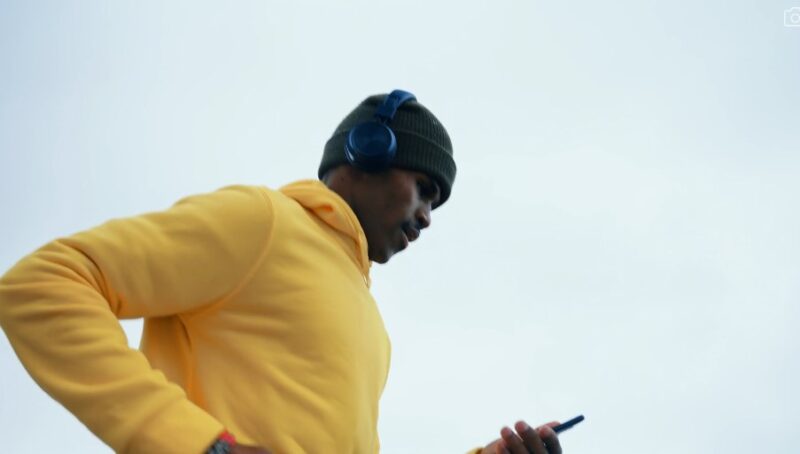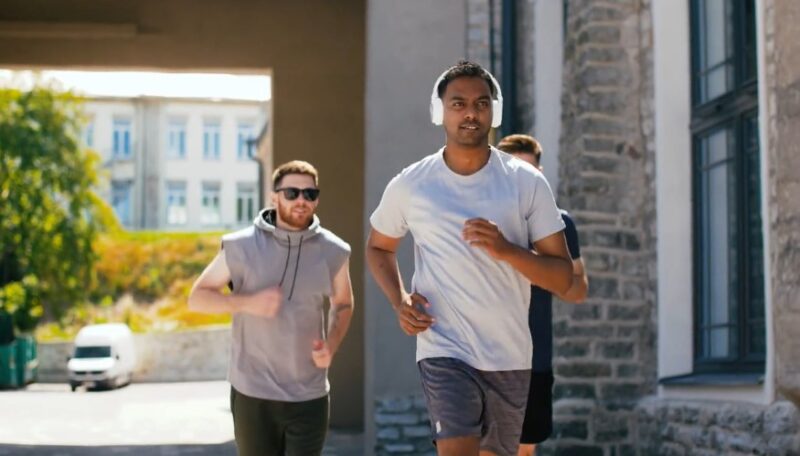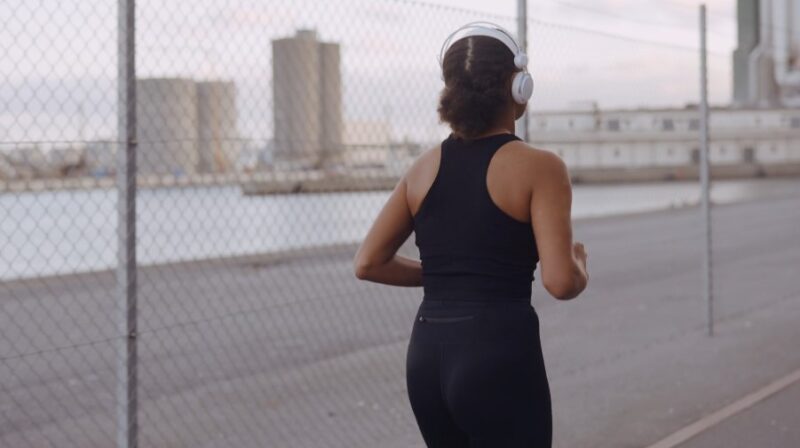Running with headphones sparks debate for a reason. Music can lift energy and sharpen focus, but it can also block out sounds that matter for safety. Some runners feel unstoppable with the right playlist. Others feel vulnerable without full awareness. The choice depends on personal goals, terrain, and comfort.
Many runners now think about hearing health, especially with frequent headphone use. Some have spoken with a hearing aid doctor to learn how volume levels and headphone type affect the ears. Long runs with loud audio can build damage over time, so safe use matters.
Here is a clear breakdown of the pros and cons to help every runner decide what works best.
Table of Contents
ToggleMusic Helps You Power Through Tough Sections

Some miles feel endless. That’s where music makes a difference. When your breath gets heavy and the legs start questioning every step, a familiar track pulls you forward.
The beat fills your head, shifts your focus, and carries you farther than silence ever could. You stop hearing the pain. You stop thinking about how much distance remains. The run becomes about rhythm instead of resistance. That’s why headphones are perfect for distances such as half-marathon.
When Music Helps Most
- Long steady-state runs
- Cold starts or early mornings
- Mental crashes during mid-run slumps
- Tough climbs where focus fades
A Steady Beat Can Keep Your Pacing Under Control

It’s easy to go too fast at the start. You feel fresh. You want to move. Without realizing it, you speed up and burn out early. Music with a consistent beat helps fix that. Your steps follow the rhythm. The tempo keeps your pace level. That prevents early fatigue and saves energy for the miles that matter.
Use tempo playlists that match your running cadence. Most runners find balance around 160 to 180 beats per minute. No need to measure or obsess. Just feel your stride and match the energy.
Stick with songs that don’t shift tempo too often. Avoid long intros or wild transitions. Let the music settle into the background and let your body take the lead.
Audio Cues Give Structure When You Run Alone
Not everyone wants music. Some runners prefer a voice guiding the session. Audio coaching apps offer clear direction during runs. You get prompts on pace, posture, effort, or recovery. It’s like having a coach without the pressure.
That works best during intervals, progression runs, or long sessions with planned shifts. You don’t need to watch a screen or check your time. You hear what matters when it matters. That builds focus and lets you stay locked into the run instead of second-guessing every move.
Start with short audio workouts. See how it fits your pace and attention span. Some voices feel natural. Others distract. Find the one that makes the run smoother, not more crowded.
Headphones Can Build a Mental Zone

Some people run to get away from noise. Others run to block it. Headphones create a space where the outside world falls away. That zone brings focus. It can help you reset after stress. It turns the run into something personal, private, and peaceful.
This works best in low-risk environments. Safe neighborhoods. Quiet trails. Park loops you’ve run a hundred times. In those zones, shutting out the world feels natural.
But when you take that mindset to busy streets or shared trails, it becomes a risk. You miss signals. You miss people. You forget how exposed you are. Never use sound to erase all connection to your surroundings. Use it to shape the mental space, not to remove the real world entirely.
Long Runs Feel Easier With Audio Distraction
Distance adds up fast when the brain stays engaged. Music, audiobooks, or podcasts shift focus away from the time. The mind follows the story or sound, and the miles move with less resistance. That mental break can make the difference between finishing the full route or stopping early.
Save fresh content for your longest runs. Keep your favorite podcast episode locked for the day when your motivation dips. That anticipation adds energy. The key is variety. Do not loop the same playlist every time. It loses its effect. Mix up music, stories, or even guided breathing exercises to reset your mental state.
Choose audio that matches the purpose of the run. Calm narration for recovery. Strong rhythm for speed. Avoid topics that spike your emotions or raise stress. Keep your brain in support mode, not in conflict.
Headphones Reduce Awareness of Real Danger

Sound blocks warnings. You miss footsteps. You miss barking dogs. You miss cyclists calling out. You miss cars coming around the bend. Even with one ear open, headphones filter out details. That turns normal routes into blind spots.
Awareness isn’t a bonus—it’s the base requirement for safe running. If your environment changes often, if you run near traffic, or if you share the trail with others, full headphones are a mistake. Open-ear models or single-ear setups work better. But nothing replaces full listening.
Never assume you’re alert just because you’re looking around. Most threats start with sound. If you can’t hear them, you’ve already lost reaction time.
High Volume Wears Down Your Ears
Short-term loudness becomes long-term damage. It builds slowly. Most runners don’t notice until they hear muffled sounds or background ringing after runs. The pressure from in-ear audio adds up. Running outside also increases the urge to turn the volume higher to fight wind or traffic.
Avoid that habit. Keep your audio at a level where you can hear your own breath and footsteps. If you can’t, it’s too loud. Take breaks from headphones entirely during warm-ups or cooldowns. That helps reset your hearing and your mental focus.
Some Headphones Feel Terrible During a Run
Comfort beats everything. A good sound system means nothing if your headphones start sliding out or hurting after ten minutes. Poor design ruins focus. You end up adjusting instead of moving.
- A snug but gentle fit that stays put
- Lightweight design that moves with your body
- Materials that don’t react badly to sweat
- Models tested by other runners, not just gym users
- In-ear tips that slip when sweaty
- Headbands that feel tight over time
- Buds that press too hard on the ear canal
- Cables that bounce or snag
- Headphones that trap heat or moisture
Try new headphones on short runs first. If you feel them constantly, they do not work for your stride. Test during intervals, hills, and slow jogs. Make sure comfort lasts through every pace.
Wireless Headphones Can Fail When You Need Them Most

Battery life is never a problem until it is. Many runners have hit the halfway mark only to hear the low-power warning beep. That sound pulls you out of your rhythm and turns the second half into frustration. Bluetooth disconnects also break concentration. You’re reaching for your phone instead of focusing on your feet.
Always check battery level before leaving home. Charge your headphones after every run. Use models with at least six to eight hours of battery life if you plan long sessions. If your device often drops signal, avoid cheap Bluetooth gear. Look for stable connection ratings built for outdoor movement.
Some runners carry wired backup headphones in a vest pocket during long events or races. That small backup can save your mental focus if your main pair fails.
Bottom Line
Headphones can push you forward or hold you back. They can make a five-mile run feel like two, or they can block the sound of a car turning too fast. Some days, music lifts you. Other days, it pulls you away from your breath, your form, and the road around you.
Every runner has to choose when they help and when they don’t. Use sound when it adds focus. Drop it when you need awareness. Keep the volume low. Know your route. Pick gear that fits your body, not someone else’s. Switch it up. Silence has value too.
Running is already hard. The right audio setup can make it better—but only if you stay in control of how you use it.
Related Posts:
- 25 Simple Running Motivation Tips To Get You Moving
- 6 Best Running Playlists Music for Every Pace and Mood
- How Can You Start a Career as a Running Coach?
- Should You Run on an Empty Stomach? Pros and Cons Explained
- Lower Back Pain While Running? Here's What You Need to Know
- How Far Is a Half Marathon? Everything You Need to Know







